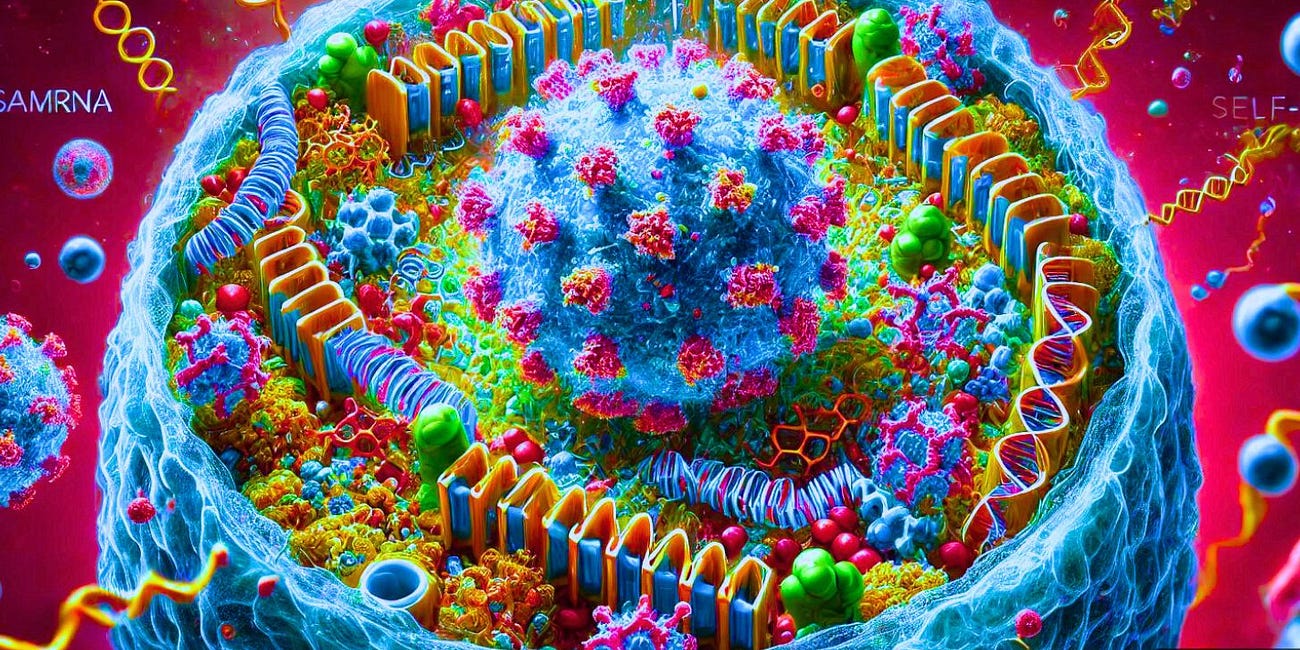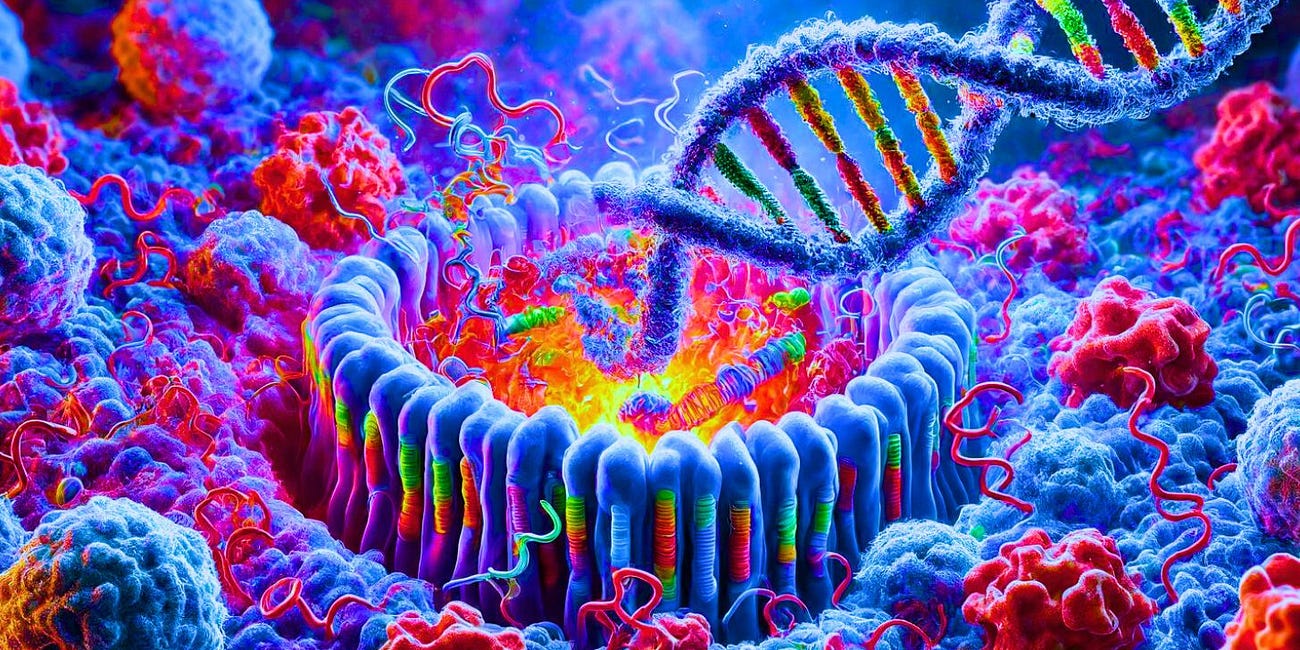Australian Gov't Classifies Self-Replicating mRNA (samRNA) Vaccines as GMOs, FOIA Documents Reveal
Self-amplifying vaccines "are considered genetically modified organisms (GMOs)," says Australia's Office of Gene Technology Regulator.
Editor’s Note: There is debate regarding whether mRNA and samRNA injectable drug platforms technically qualify as “vaccines.” This article’s use of the term vaccine is for ease of understanding and does not signify this website’s position on the matter.
In what could be a game-changing revelation, Freedom of Information Act (FOIA) documents have confirmed that Australia’s Office of Gene Technology Regulator (OGTR) has classified self-amplifying mRNA (samRNA) vaccines as genetically modified organisms (GMOs) for several years.
Follow Jon Fleetwood: Instagram @realjonfleetwood / Twitter @JonMFleetwood / Facebook @realjonfleetwood
This classification, which has not been widely known until now, reflects growing concerns over the self-replicating nature of these vaccines—technology designed to continue producing spike protein within the body long after the initial injection.
This development adds a new layer to the ongoing debate over the safety and regulation of emerging so-called vaccine technologies and raises serious concerns about the long-term implications of such technologies on public health and genetic modification.
Unlike traditional mRNA jabs, such as those developed by Pfizer and Moderna for COVID-19, samRNA vaccines replicate within the body, producing more RNA, and consequently, more spike protein over time.
This feature amplifies the biological activity of the vaccine, allegedly resulting in stronger immune responses, but also raising concerns about spike protein toxicity and long-term health impacts.
The OGTR explained that this capability is what subjects samRNA vaccines to stricter regulatory controls.
According to internal documents from the OGTR, released under FOIA 051-2024 on October 1, 2024, “self-amplifying RNA (saRNA) vaccines are considered genetically modified organisms (GMOs), on the basis that the nucleic acid is capable of reproduction.”
Another document from the FOIA release reiterates that “self-amplifying vaccines using VEEV technology (with nsP1-4 genes and without any structural genes) are defined as genetically modified organisms under the Gene Technology Act 2000.”
This means that these vaccines meet the legal definition of an organism that is capable of reproducing or transferring genetic material.
You can download the FOIA documents below:
Concerns About Safety and Shedding
mRNA injection platforms have many problems that can lead to negative health outcomes, including ingredients like pseudouridine being linked to cancer growth, so-called frameshifting leading to immune system disorders, as well as DNA contamination and spike protein toxicity.
The self-replicating nature of samRNA vaccines leads to the production of significantly more spike protein than standard mRNA vaccines, potentially increasing the toxicity risk.
Moreover, mRNA vaccines have been shown to shed spike protein onto others, and if samRNA vaccines generate more spike protein, this could lead to increased risks of shedding from the vaccinated onto the unvaccinated.
This raises informed consent issues, as the spike protein could be shed onto individuals without their knowledge or permission.
Global Momentum: Japan Leads in samRNA Vaccine Rollout While the U.S. Follows with Major Investments
As samRNA vaccines continue to gain traction worldwide, the FOIA documents released by the OGTR raise critical questions about their future use.
This website has reported Japan’s rollout of samRNA technology.
In November 2023, Japan’s Ministry of Health, Labor and Welfare (MHLW) granted approval for ARCT-154, a samRNA COVID-19 vaccine for initial vaccination and booster for adults 18 years and older.
This website has also reported how the Biden administration awarded vaccine manufacturer Gritstone Bio a $433-million contract in September 2023 “to conduct a mid-stage study of its self-amplifying mRNA COVID-19 vaccine candidate.”
The new documents confirm that Australia views these injections as a fundamentally different—and more regulated—class of biotechnology, adding urgency to the global discussion about the risks of genetic modification in medicine.
Australia’s stance may encourage other nations to reconsider how they regulate samRNA technology, especially as it becomes clear that these vaccines carry risks not present in traditional mRNA platforms.
Australia’s classification of samRNA as a GMO reveals a fundamental shift in how these injectables are understood.
The technology’s ability to self-replicate and transfer genetic material has brought it under greater scrutiny, and the implications for public health are far-reaching.
The rest of the world will be watching closely as more countries are forced to confront the reality of self-replicating genetic medicine.
Follow Jon Fleetwood: Instagram @realjonfleetwood / Twitter @JonMFleetwood / Facebook @realjonfleetwood
Japan to Roll Out New Self-Replicating samRNA COVID Shot That Produces Even More Toxic Spike Protein in the Body Than Regular mRNA Jabs
Meiji Seika Pharma announced plans on Tuesday to seek approval in Japan for its self-amplifying mRNA (samRNA) COVID-19 vaccine, Kostaive (ARCT-2301), with a goal of distributing it for the upcoming fall and winter seasons.
Biotech Company Developing Next-Generation Self-Copying 'sa-mRNA' COVID-19 Vaccine Funded by Biden Admin, Bill Gates
Last month, Japan’s Ministry of Health, Labor and Welfare (MHLW) granted approval for ARCT-154, a “self-amplifying mRNA” (sa-mRNA) COVID-19 vaccine for initial vaccination and booster for adults 18 years and older.
Roughly 1/3rd of mRNA COVID-19 Vaccine Recipients Experience 'Unintended Immune Response in the Body' Caused by 'Frameshifting': Cambridge University, Journal 'Nature'
In a startling new study, researchers from the University of Cambridge’s Medical Research Council (MRC) Toxicology Unit have uncovered a significant unintended immune response triggered by mRNA COVID-19 vaccines in approximately one-third (25-30%) of recipients.
Pfizer COVID Jab's Dangerous DNA Impurities 'Exceed the Permitted Limit Value' by 'More Than 500 Times': Peer-Reviewed Journal 'Methods and Protocols'
A new study published this month in MDPI’s peer-reviewed Methods and Protocols confirms Pfizer Inc.’s COVID-19 injection contains in some cases “more than 500 times” the permitted limit of potentially cancer-causing DNA contamination.
mRNA COVID Jab Ingredient N1-Methyl-Pseudouridine (m1Ψ) 'Stimulated Cancer Growth and Metastasis': 'International Journal of Biological Macromolecules'
A new study published earlier this month in the International Journal of Biological Macromolecules confirms that an ingredient in mRNA COVID-19 injections called N1-methyl-pseudouridine (m1Ψ) increases cancer growth and spread.
COVID-19 Jab mRNA and Spike Protein Stay in Human Tissue Longer Than Expected: Journal 'British Pharmacological Society'
A new review article published Wednesday in the journal British Pharmacological Society confirms COVID-19 jab mRNA can last up to a month in the body, and spike proteins can persist over six months, potentially causing cardiotoxicity and immune response issues, with ingredient N1-methyl-pseudouridine (m1Ψ) contributing to these risks.













The virus was a b i 😡 w e a p o n originally created at the University of North Carolina, by Ralph Baric under the U.S. military complex. It was created to globally force the vaccine. Been in development for years. There's 68 more viruses in the pipeline.
Opening statement
https://rumble.com/v5ji6cz-dr.-david-martin-speech-okc-10-17-24.html
Closing remarks
https://rumble.com/v5ji7et-dr.-david-martin-closing-remarks-okc-10-17-24.html
An Australian legal team led by Julian Gillespie have been challenging in court the legality of the govt having approved the mRNA shots without their going through the gene therapy approval body. I like to think that this has resulted in hesitation to commit the same mistake with samRNA. So their efforts (and those of a tiny handful of politicians that ran the gauntlet of ridicule as they kept publicly calling the whole covid fraud) have not come to nought. There is a god in heaven afterall!